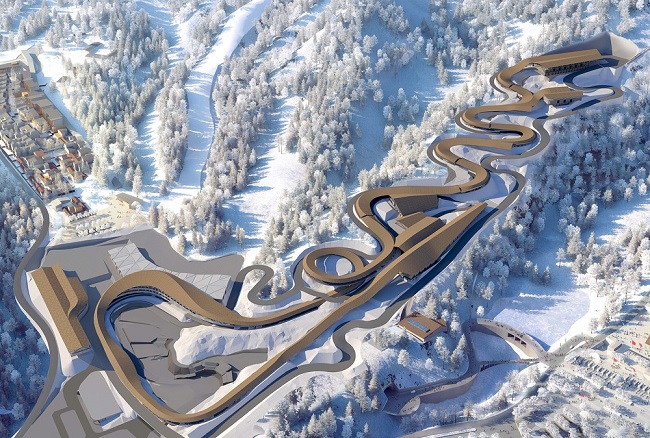There are seventeen tracks across the world used for bobsleigh, luge, and skeleton competitions, including the new track in Yanqing, China, which will host the 2022 Winter Olympics.
Except for the track in St. Moritz, Switzerland, which uses natural refrigeration, all of the other tracks on this list are made of reinforced concrete and require artificial refrigeration to reach the desired temperature before a race.

Are All Luge Tracks The Same
In the sport of luge, one or two competitors ride a flat sled while lying on their backs, feet first. The track is sloped ever-so-slightly downward so that the athlete and sled can be dragged along by gravity. Because the athletes don’t all go to the track at once, the winner is determined by whose cumulative time is the quickest.
There are four different luge events in the Olympics, including men’s and women’s singles, as well as doubles and a team relay.
Although both sexes are welcome to participate, men have dominated the doubles competition since since it was introduced in 1964. Since its inception in 2014, the team relay has featured a series of men’s singles, women’s singles, and men’s doubles, with the fastest aggregate time determining the victor.
The snow and ice that make up the track for natural-track luge (naturbahn) are what give this sport its name. In other words, for every 30 metres (10 feet) of track, the maximum elevation change is 1.5 feet (1.5 percent) (45 centimeters). There are times when speeds of 50 mph are possible (80 kilometres per hour). Assuming they have access to sufficient snow, anyone can build a luge course in the wild.
The track in kunstbahn luge, which takes place on an artificial surface, is more than ten percent steeper on average and has high-banked corners (about 5 to 6 degrees).
Artificial tracks can support speeds of up to 140 kilometres per hour (90 miles per hour). At 95 miles per hour, the Austrian slider Manuel Pfister holds the record for fastest luge speed in the world (154 kilometres per hour).
In just one minute, a luger will cover the equivalent of 30 stories of descent on a track that is typically less than 1 mile (1.6 km) in length.
The layout consists of a variety of different types of turns and slopes, including straightaways, left and right turns, downhills (and sometimes a short uphill), and at least one S-type curve combination like the “labyrinth,” which consists of three or four consecutive turns with no straightaways between them.
Final Words
It’s easy to look at bobsleigh, luge, and skeleton and think there isn’t much to choose between them. Athletes in each event scream down a narrow ice course at breakneck speeds, putting on displays of fearlessness that may bring the house down.
But there are key distinctions among these three fields that make each competition a one-of-a-kind, adrenaline-pumping extravaganza.

